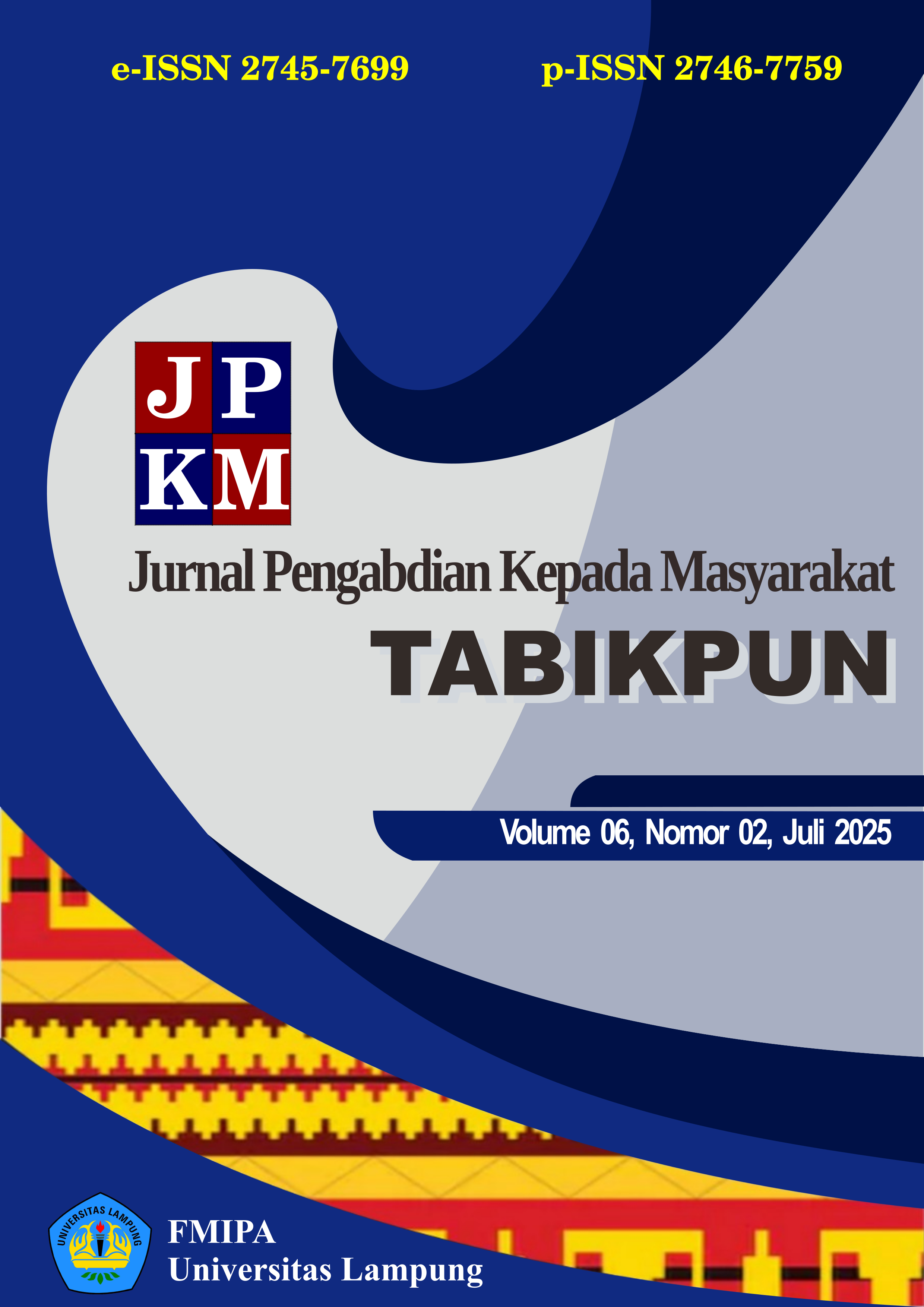Converting Corn Cobs into Briquettes in Braja Harjosari Village, Braja Salebah Subdistrict, East Lampung Regency
DOI:
https://doi.org/10.23960/jpkmt.v6i2.164Keywords:
Bioarang, Briket, Pirolisis, Zero Waste SystemAbstract
Corn cobs are agricultural waste that can be processed into an alternative firewood. Carbonization (pyrolysis) followed by briquetting is one method to process biomass into solid charcoal. According to a survey conducted, the large amount of corn cob waste is due to a lack of knowledge in processing waste which causes health and environmental problems. Converting corn cob waste into briquettes transforms it into a valuable commodity. In fact, transforming corn cob waste is essentially applying the zero waste concept to agricultural production systems. Based on potential and agreements with farmer groups, community members, and local government, this service activity was carried out. The productivity of the briquette charcoal business made from corn waste is increased through training and assistance.
Downloads
References
HALUTI, S. (2016). Pemanfaatan Potensi Limbah Tongkol Jagung Sebagai Bioethanol Melalui Pross fermentasi Di Wilayah Provinsi Gorontalo. Jurnal Technopreneur, 4(1).
Haryanto, A., Hidayat, W., Hasanudin, U., Iryani, D. A., Kim, S., Lee, S., & Yoo, J. (2021). Valorization of indonesian wood wastes through pyrolysis: A review. Energies, 14(5). https://doi.org/10.3390/en14051407
Hidayat, W., Qi, Y., Jang, J. H., Febrianto, F., Lee, S. H., Chae, H. M., Kondo, T., & Kim, N. H. (2017). Carbonization characteristics of juvenile woods from some tropical trees planted in Indonesia. Journal of the Faculty of Agriculture, Kyushu University, 62(1). https://doi.org/10.5109/1801799
Hidayat, W., Riniarti, M., Prasetia, H., Niswati, A., Hasanudin, U., Banuwa, I. S., Yoo, J., Kim, S., & Lee, S. (2021). Characteristics of biochar produced from the harvesting wastes of meranti (Shorea sp.) and oil palm (Elaeis guineensis) empty fruit bunches. IOP Conference Series: Earth and Environmental Science, 749(1). https://doi.org/10.1088/1755-1315/749/1/012040
Riniarti, M., Hidayat, W., Prasetia, H., Niswati, A., Hasanudin, U., Banuwa, I. S., Yoo, J., Kim, S., & Lee, S. (2021). Using two dosages of biochar from shorea to improve the growth of Paraserianthes falcataria seedlings. IOP Conference Series: Earth and Environmental Science, 749(1). https://doi.org/10.1088/1755-1315/749/1/012049
Surono, U. B. (2010). Peningkatan Kualitas Pembakaran Biomassa Limbah Tongkol Jagung sebagai Bahan Bakar Alternatif dengan Proses Karbonisasi dan Pembriketan. Jurnal Rekayasa Proses, 4(1).
Wijaya, B. A., Hidayat, W., Riniarti, M., Prasetia, H., Niswati, A., Hasanudin, U., Banuwa, I. S., Kim, S., Lee, S., & Yoo, J. (2022). Meranti (Shorea sp.) Biochar Application Method on the Growth of Sengon (Falcataria moluccana) as a Solution of Phosphorus Crisis. Energies, 15(6). https://doi.org/10.3390/en15062110
Zandersons, J., Gravitis, J., Kokorevics, A., Zhurinsh, A., Bikovens, O., Tardenaka, A., & Spince, B. (1999). Studies of the Brazilian sugarcane bagasse carbonisation process and products properties. Biomass and Bioenergy, 17(3). https://doi.org/10.1016/S0961-9534(99)00042-2
Downloads
Published
How to Cite
Issue
Section
License
Copyright (c) 2025 Agus Sutrisno, La Zakaria, Dorrah Aziz, Khoirin Nisa

This work is licensed under a Creative Commons Attribution-NonCommercial-ShareAlike 4.0 International License.


